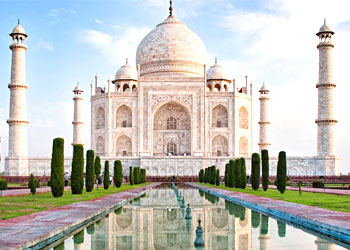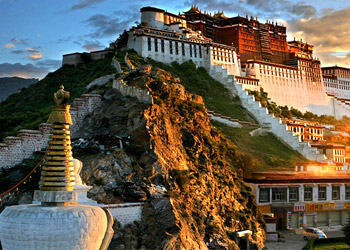India
India is an extraordinary place, one of the world’s great human melting pots, where various cultures, religions, and ethnicities live in reasonable harmony. It teems with one-sixth of the planet’s population, from rural villages where life hasn’t changed for hundreds of years to ultra-modern cities like Mumbai that ooze Western sensibilities. India is vast, varied, and, above all, unforgettable. With an ability to inspire, frustrate, thrill, and confound, India presents an extraordinary spectrum of encounters for the traveler.
Stretching from the frozen barrier of the Himalayas to the tropical greenery of Kerala and from the sacred Ganges to the sands of the Thar Desert, the boundaries of India encompass incomparable variety.
Religious and spiritual themes dominate India’s rich and multi-layered cultures. India’s cultural heritage is expressed through its myriad of languages, and much great literature and poetry has been written about it. Art and theatre flourish amongst the country’s bustling cities against the ever-expanding influence of the West.
India has holy sites and thought-provoking philosophies for those seeking spiritual sustenance. At the same time, history buffs will stumble upon gems from the past almost everywhere—grand vestiges of former empires serenely peer over swarming streets and crumbling fortresses looming high above plunging ravines.
Enjoy the Mountains and beaches in India. Visit.
With mountains, jungles, deserts, and beaches, India has it all. It is bounded to the north and northeast by the snow-capped Himalayas, the tallest mountain range in the world. They also fed the perennial rivers Ganga, Yamuna (Jamuna), and Sindhu (Indus), on whose plains India’s civilization flourished. The other Hi Alayan River, Brahmaputra, flows through the northeast, mainly through Assam. The Deccan plateau is bounded by the Sahyadri (Western Ghats) range to the West and the Eastern Ghats to the east.
The plateau is more arid than the plains, as the rivers that feed the area, such as the Narmada, Godavari, and the Kaveri, run dry during the summer. Towards the northeast of the Deccan plateau is what used to be a thickly forested area called the Dandakaranya.
You could spend a lifetime exploring the echoes of ancient cultures and the country’s dramatic landscapes, including the mighty Himalayas. The most frequently visited part of India is the Golden Triangle, which is comprised of Delhi, Agra, and Jaipur. The people-packed cities of Mumbai (Bombay) and Kolkata (Calcutta) have a bustling, colorful charm. In contrast, the holy city of Varanasi and the awe-inspiring temples of Tamil Nadu are rewarding places of pilgrimage.
It has 28 world heritage sites.
Ancient free oes are on view in the Ajanta Caves in Maharashtra, and 28 World Heritage Sites are dotted across India. Every region in India is stippled with an unmatched depth of history, diversity in cultures and languages, monuments, and beauty of settings.
An incredible country, a perfect fusion of tradition and modernity, with a myriad of cultural and geographical diversities, India is perhaps the most diverse country in the world, whether it is historic palaces, cultural heritage sites, majestic temples, colorful marketplaces, sea beaches, desolate deserts, forested mountains, snow-capped peaks, or even a spiritual search for you.
Each package combines various tour activities in India catering to your specific needs, such as sightseeing tours of ancient Hindu, Buddhist, and Islamic historic places, high mountains, rivers, monuments, and desserts.
Book with Confidence
- Flexible bookings and easy trip date changes
- Personalized service and customized group sizes
- Safe travels with owner-operated services and highly experienced guides
- Best price guarantee for the most value for your money
- Secure & easy online booking
 Have Questions?
Have Questions?Talk to Expert
Meet Mr. Puru Timalsena, Nepal's best trek and tour organizer, who has been working in the Himalayas for more than 15 years.
WhatsApp/Viber +977 98510 95 800










